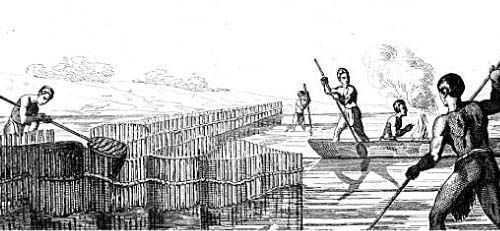This will be the first regular or occasional article about fishing and boating in our state. It will not deal with the latest fishing reports or how to tie a fail-safe fishing lure or how to choose the best fishing boat. Other writers will handle such issues far better than I could.
Instead, my columns will have more general topics of interest to a wide readership. For example, Florida’s Other Fishers (about the birds, gators, otters, and creatures that also “fish” our waters), How Scientists Are Trying to Keep Out Invasive Species Like Pythons and Foreign Fish, How Officials Determined that the Everglades Is Actually a River, How a Famous Novelist (Zane Grey) Fished in the Florida Keys, How a Famous Inventor (Thomas Edison) Used to Charter a Special Boat for Fishing, etc. My articles will be more historical in nature and will alternate between fishing and boating.
But first: the story of how Native Americans caught fish a thousand or more years ago. The Caloosahatchee River runs today about 67 miles from Lake Okeechobee to the Gulf of Mexico just west of Fort Myers. It did not originally connect with Lake Okeechobee, but engineers built a canal in the late 19th century to join the two bodies of water and enable boats to go from the Atlantic Ocean to the Gulf through two rivers and a series of locks.
After passing Fort Myers, the river narrows at Shell point but then widens considerably into San Carlos Bay. The swampy land extends back on both sides of the mouth of the river. A narrow strip of land on the north side of the river near its mouth is called Sword Point, a place where Native Americans lived a thousand years ago.
Archaeologists working with the Florida Department of State’s Public Lands Archaeology Program have mapped and examined hundreds of sites in the area, including Charlotte Harbor. Although the exposed Sword Point has been subject to many storms, archaeologists have discovered the underwater remains of a fish weir or impoundment, consisting of an enclosure of oyster shells in two arms that extend from the land into the deep water of the bay.
Remote sensors have detected what may be a line of stakes in the lagoon sediment. The Indians may have used the stakes to secure netting that could have trapped fish as the tide receded. (See the photo here of an ancient fish weir used by Florida Indians.) The Calusa Indians who lived in the area must have captured many of the fish passing through those waters. Not an easy way to catch fish, but an effective one.
Let me end this first piece with an appropriate proverb from my ancestors, the Irish: “May the holes in your net be no larger than the fish in it.”
Kevin McCarthy, the author of Caloosahatchee River Guidebook (Pineapple Press, 2012), can be reached at kevinkadin@yahoo.com.
